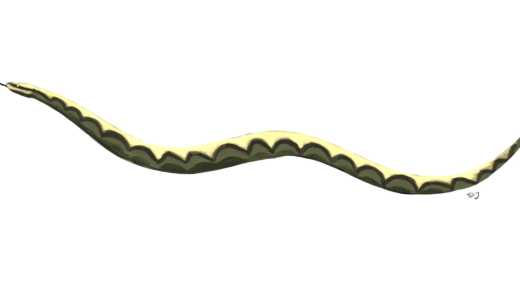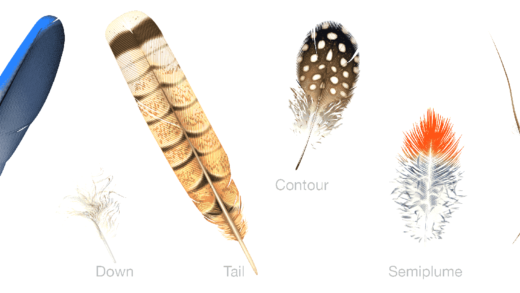This article provides a comprehensive guide on identifying male and female birds, covering physical features, feather color, behavioral traits, age considerations, species-specific signs, DNA testing, misconceptions, observational techniques, vocalizations, seasonal changes, identification tools, and community engagement.
Physical Features
Bird gender identification often starts with physical features. Size, coloration, and markings can be significant indicators when distinguishing male from female birds. Generally, males tend to be larger and more vividly colored, while females often display more muted tones. For instance, in many species of birds, males are adorned with bright plumage to attract mates, while females may be drab to blend in with their surroundings, particularly during nesting.
- Size: Males are typically larger.
- Coloration: Males may exhibit vibrant colors.
- Markings: Unique patterns can indicate gender.
These traits can vary significantly among species, making it essential to consider the specific bird in question. Observing these features closely can greatly enhance your ability to identify the gender of birds.
Feather Color
Feather color plays a crucial role in how to tell male from female birds. In many species, males display bright, eye-catching colors, while females often have duller feathers. For instance, male peacocks boast stunning iridescent feathers, while peahens are brown and tan, helping them camouflage from predators. This difference is primarily due to the need for males to attract females during mating seasons.
- Vibrant colors: Commonly found in males.
- Dull colors: Typically seen in females.
- Seasonal changes: Colors may shift during breeding seasons.
Understanding feather color can significantly assist in bird gender identification. However, exceptions exist, and some species show minimal color differences. Therefore, it’s essential to consider additional identification methods.
Behavioral Differences
Behavioral traits are another telling factor in bird gender identification. Males often engage in behaviors such as singing or performing elaborate displays to attract females. For example, male songbirds are known for their complex songs, which they use to establish territory and woo potential mates. In contrast, females may be more focused on nesting and caring for young.
- Singing: Predominantly a male trait.
- Nesting habits: Females typically take the lead.
- Displays: Males perform physical displays.
By observing these behaviors, bird watchers can gain insights into the gender of the birds they encounter. However, it’s important to note that not all species follow these patterns, so context is key.
Age Considerations
Age can significantly influence the appearance and behavior of birds, impacting how to tell male from female birds. Young birds often lack the bright colors and distinct markings seen in adults, making gender identification challenging. For instance, juvenile male birds may resemble females until they reach maturity and develop their adult plumage.
- Juvenile birds: Often resemble females.
- Adult males: Typically exhibit brighter colors.
- Maturity: Age affects appearance and behavior.
Recognizing the age of a bird is essential for accurate gender identification. As birds mature, their physical traits and behaviors may evolve, providing clearer indicators of their gender.
Species-Specific Signs
Different bird species exhibit unique traits that can aid in bird gender identification. For example, in some species, males and females may have entirely different plumage, while in others, subtle differences in size or markings can be key indicators. The American Robin, for example, has a bright red breast in males, while females often have a more muted coloration.
- Distinct plumage: Some species display stark differences.
- Subtle differences: Others may show minor variations.
- Behavioral traits: Unique to specific species.
Understanding these species-specific signs will enhance your bird-watching experience and improve your skills in identifying male and female birds accurately.
DNA Testing
DNA testing is a groundbreaking method in bird gender identification. This scientific approach allows for accurate gender determination, especially in species where physical characteristics are not distinct. By analyzing a small sample of a bird’s DNA, experts can identify the sex with remarkable precision.
- Sample Collection: Typically involves feathers, blood, or eggshells.
- Process: DNA is extracted and analyzed in a lab.
- Accuracy: Results are highly reliable, eliminating guesswork.
This method is especially valuable for breeders and conservationists who require accurate sexing for effective management. While it may not be necessary for casual bird watchers, understanding this technique enriches the knowledge of how to tell male from female birds.
Common Misconceptions
There are several misconceptions about bird gender identification that can lead to confusion. One common myth is that all birds exhibit extreme differences in size and color between sexes. While this is true for some species, others show minimal variation.
- Size Differences: Not all males are larger; some species defy this norm.
- Coloration: Dull colors in females do not apply universally.
- Behavioral Traits: Singing is not exclusive to males in every species.
Recognizing these myths is crucial for accurate identification. It helps bird watchers avoid false assumptions and improves their observational skills.
Observational Techniques
Effective observational techniques can significantly enhance your ability to identify bird genders. Patience and careful observation are key. Start by watching the bird’s behavior and interactions with its environment.
- Behavior Patterns: Note singing, nesting, or feeding habits.
- Observation Time: Early morning or late afternoon are ideal for bird activity.
- Use of Binoculars: Invest in a good pair for a closer look without disturbing them.
Recording your observations can be beneficial. Keeping a journal helps track patterns and behaviors, making future identifications easier.
Vocalizations
Vocalizations play a significant role in bird gender identification. Many male birds are known for their distinctive songs, which they use to establish territory and attract mates. Female birds may have different calls, often softer or less complex.
- Song Complexity: Males typically have more intricate songs.
- Call Types: Females may use simpler calls for communication.
- Seasonal Variations: Vocalizations can change during mating seasons.
Listening closely to these vocal patterns can provide valuable clues about a bird’s gender, making it a useful tool for enthusiasts.
Seasonal Changes
Understanding seasonal changes is essential in bird gender identification. Breeding seasons often influence the appearance and behavior of birds. During this time, males may display brighter plumage and more aggressive behaviors to attract females.
- Breeding Plumage: Males often become more vibrant.
- Behavioral Changes: Increased singing and territorial displays occur.
- Non-breeding Seasons: Colors may dull and behaviors may shift.
Being aware of these seasonal behaviors can significantly aid in identifying bird genders accurately throughout the year.
Tools for Identification
When it comes to bird gender identification, having the right tools and resources can make all the difference. A variety of aids exist that can assist bird watchers in identifying male and female birds with greater accuracy.
- Field Guides: Invest in comprehensive field guides specific to your region. These guides often include illustrations and descriptions of gender differences among species.
- Apps: Numerous mobile apps are designed for bird identification. They offer features like photo recognition and sound recordings, which can help distinguish between genders.
- Binoculars: A good pair of binoculars is essential. They allow for close observation without disturbing the birds, helping you catch subtle differences in appearance.
- Camera: Taking photos can help you review features later. You can compare images to field guides or apps to confirm gender identification.
- Online Forums: Joining birding forums or social media groups can provide insights from experienced bird watchers who can offer advice on identification.
Utilizing these tools enhances your observation skills and increases your confidence in identifying bird genders. As you become more familiar with these resources, identifying male and female birds will become a much more enjoyable and accurate endeavor.
Engaging with Bird Communities
Connecting with bird communities is an excellent way to improve your bird gender identification skills. Engaging with fellow bird watchers not only provides valuable knowledge but also fosters a sense of camaraderie and shared passion.
- Local Birding Groups: Joining a local birding group can expose you to experienced bird watchers who can share tips on gender identification.
- Workshops and Events: Participate in workshops or birding events where you can learn from experts. These gatherings often include hands-on learning experiences.
- Online Communities: Platforms like Facebook, Reddit, or dedicated birding websites host groups where you can ask questions, share experiences, and gain insights from a diverse range of birders.
- Mentorship: Seek out a mentor who is knowledgeable about birds. Having someone guide you can accelerate your learning process.
- Citizen Science Projects: Participating in citizen science initiatives allows you to contribute to bird research while enhancing your identification skills.
By immersing yourself in bird communities, you not only enrich your knowledge of how to tell male from female birds but also become part of a vibrant network that shares your enthusiasm for avian life.





Comments are closed.